So far we've examined two-channel stereo recording techniques. These methods reproduce the instruments and hall reverb in front of the listener, in the area between the two loudspeakers. In contrast, surround sound places audio images around the listener. The musical ensemble is usually up front, and the hall ambience is all around.
Stereo uses two channels feeding two loudspeakers. Surround sound uses multiple channels feeding multiple speakers.
Surround gives a wonderfully spacious effect. It puts you inside the concert hall with the musicians. You and the music occupy the same space--you're part of the performance. For this reason, surround is more musically involving, more emotionally intense, than regular stereo.
A magazine devoted to multichannel sound production is Surround Professional, available on the Web at surroundpro.com/.
Here are the basic steps to create a surround recording:
1. Set up four or five mics in a surround array (described later in this section) and plug them into mic preamps or a mixer.
2. Record the amplified mic signals onto a multitrack hard-drive (HD) recorder.
3. Master a surround DVD from the four or five channels. You need DVD-Audio authoring software, a DVD-R recorder, and blank DVD discs. Two major titles of authoring software are DVD-Audio Creator by Sonic Solutions (sonic.com) and discWelder Bronze by Minnetonka software (minnetonka.com or discwelder.com).
4. Alternatively, master the surround recordings on super-audio compact discs or DVD video discs.
Surround Speaker Arrangement
In a technique inherited from the film industry, 5.1 surround-sound uses six channels feeding six speakers placed around the listener. This forms a 5.1 surround system, where the "point 1" is the subwoofer or low-frequency effects (LFE) channel. The LFE channel is band-limited to 120Hz and below.
The six speakers are:
• Left front
• Center
• Right front
• Left surround
• Right surround
• Subwoofer
FIG. 1 shows the recommended placement of monitor speakers for 5.1 surround sound. It is the standard setup proposed by the International Telecommunication Union (ITU). From the center speaker, the left and right speakers should be placed at +/-30°, and the surrounds at +/-110°.
The left- and right-front speakers provide regular stereo. The surrounds provide a sense of envelopment due to room ambience. They also allow sound images to appear behind the listener. Deep bass is filled in by the sub woofer. Because we do not localize low frequencies below about 120Hz, the sub can be placed almost anywhere without degrading localization.
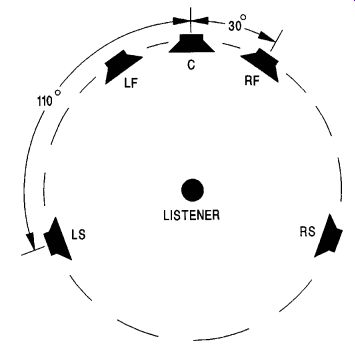
FIG. 1 Recommended placement of monitor speakers for 5.1 surround sound.
In a system originally developed for theaters, the center-channel speaker is mounted directly in front of the listener. In a home-theater system, it is placed just above the TV screen, or just below and in front of the TV screen. This speaker plays center-channel information in mono, such as dialog.
Why use a center speaker, when two stereo speakers create a phantom center image? If you use only two speakers and you sit off-center, the phantom image shifts toward the side on which you're sitting. But a center-channel speaker produces a real image, which does not shift as you move around the listening area.
Also, the phantom center image does not have a flat frequency response, but a center speaker does. Why is this? Remember that a center image results when you feed identical signals to both stereo speakers. The right-speaker signal reaches your right ear, but so does the left-speaker signal after a delay around your head. The same thing occurs symmetrically at your left ear. Each ear receives direct and delayed signals, which interfere and cause phase cancellations at 2 kHz and above. A center channel speaker does not have this response anomaly.
With a phantom center image, the response is weak at 2 kHz because of the phase cancellation just mentioned. To compensate, recording engineers often choose mics with a presence peak in the upper midrange for vocal recording. The center-channel speaker does not need this compensation.
For sharpest imaging and continuity of the soundfield, all the speakers should be:
• the same distance from the listener;
• the same model (except the sub);
• the same polarity;
• direct-radiator types;
• driven with identical power amps;
• matched in sound pressure level with pink noise.
Typically the speakers are 4-8 feet from the listener and 4 feet high. Use a length of string to place the monitors the same distance from your head.
The sub can go along the front wall on the floor.
Be sure that all the speakers sound the same so there is no change in tonal balance as you pan images around.
Surround-Sound Mic Techniques
You can record classical music in surround using four or five microphones, which capture the three-dimensional spatial character of the concert hall in which the musical ensemble is playing. Each mic feeds a separate track of a multitrack recorder.
Surround mic techniques are somewhat different from stereo mic techniques. In addition to the usual front-left and -right mics, you need two surround mics to pick up the hall ambience and a center mic to feed to the center channel. You don't need a subwoofer channel with this type of recording. Note that listening in surround reduces the stereo separation (stage width) because of the center speaker, but mic techniques for surround are optimized to counteract this effect.
A number of mic techniques have been developed for recording in surround. Let's take a look at them.
SoundField 5.1 Microphone System
This system is a single, multiple-capsule microphone (SoundField ST250 or MKV) and SoundField Surround Decoder for recording in surround.
The decoder translates the mic's B-format signals (X, Y, Z, and W) into L, C, R, LR, RR, and mono subwoofer outputs. For details, see Section 12 under the heading "Surround Microphones" and Section B under the heading "SoundField Microphone."
Delos VR^2 Surround Miking Method
John Eargle, Delos's director of recording, developed Delos's VR2 (Virtual Reality Recording) format.
In making these recordings, Eargle typically uses the mic placement shown in FIG. 2. This method employs an Office de Radiodiffusion Television Française (ORTF) pair in the center, flanked by two spaced omnis typically 12 feet apart. Two house mics (to pick up hall reverb) are placed about 23-52 feet behind the main pair. These house mics are cardioids aiming at the upper rear corners of the hall, spaced about 12 feet apart and about 30 feet high. Spot mics (accent mics) are placed within the orchestra to add definition to certain instruments.
The mics are assigned to various tracks of a digital multitrack recorder:
• 1 and 2: A mix of the ORTF-pair mics, flanking mics, house mics, and spot mics.
• 3 and 4: ORTF-pair mics.
• 5 and 6: Flanking mics.
• 7 and 8: House mics (surround mics).

FIG. 2 A Delos surround miking method.
NHK Method
The Japanese NHK Broadcast Center has worked out another surround miking method. Engineers found that, for surround recording, cardioid mics record a more natural amount of reverb than omni mics. The mics are placed as described below:
• A center-aiming mic feeds the center channel.
• A near-coincident pair feeds front left and front right.
• Widely spaced flanking mics add expansiveness.
• Up to three pairs of ambience mics aim toward the rear.
FIG. 3 shows the mic placement. The front mics are placed at the critical distance from the orchestra, where the direct-sound level matches the reverberant-sound level. Typically, this point is 12-15 feet from the front of the musical ensemble and 15 feet above the floor.
NHK engineers make this recommendation: when you're monitoring the surround program, the reverb volume in stereo listening should match the reverb volume in multichannel listening. That is, when you fold down or collapse the monitoring from 5.1 to stereo, the direct/reverb ratio should stay the same.
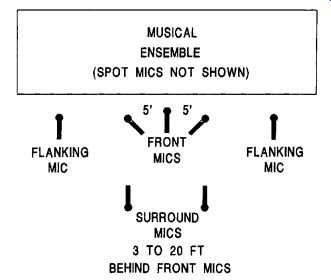
FIG. 3 An NHK surround-sound miking method.
KFM 360 Surround Miking System
Jerry Bruck of Posthorn Recordings developed this elegant surround miking method. It is a form of the mid-side (MS) stereo technique.
Bruck starts with a modified Schoeps KFM 6U stereo microphone, which is a pair of omni mics mounted on opposite sides of a 7-inch hard sphere. Next to those mics, nearly touching, are two figure-eight mics, one on each side of the sphere, each aiming front and back (FIG. 4). This array creates two MS mic arrays aimed sideways in opposite directions.
The mics do not seriously degrade one another's frequency response.
In the left channel, the omni and figure-eight mic signals are summed to give a front-facing cardioid pattern. They are also differenced to give a rear-facing cardioid pattern. The same thing happens symmetrically in the right channel. The sphere, acting as a boundary and a baffle, "steers" the cardioid patterns off to either side of center and makes their polar patterns irregular.
By adjusting the relative levels of the front and back signals, the user can control the front/back separation. As a result, the mic sounds like it is moving closer to or farther from the musical ensemble.
According to Bruck:
The system is revelatory in its ability to recreate a live event. Perhaps most remarkable is the freedom a listener has to move around and select a favored position, as one might move around in a concert hall to select a preferred seat. The image remains stable, without a discernible "sweet spot." The reproduction is unobtrusively natural and convincing in its sense of "being there."
The four mic signals can be recorded on a four-track recorder for later matrixing. The figure-eight mics need some equalization (EQ) to compensate for their low-frequency rolloff and loss in the extreme highs.
To maintain a good signal-to-noise ratio, this EQ can be applied after the signal is digitized.
Five-Channel Microphone Array with Binaural Head
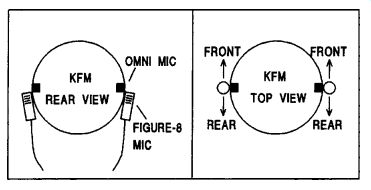
FIG. 4 The KFM 360 surround miking system.
This method was developed by John Klepko of McGill University. It combines an array of three directional mics with a two-channel dummy head (FIG. 5):
• For the front-left and -right channels: Identical supercardioid mics.
• For the center channel: A cardioid mic.
• For the surround channels: A dummy head with two omni mics fitted into the ear molds.
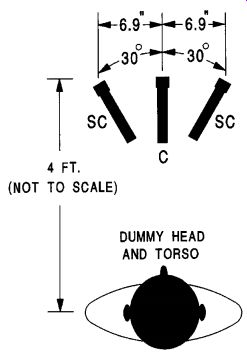
FIG. 5 The Klepko surround-sound miking method.
The mics are shock mounted and have equal sensitivity and equal gains.
Supercardioids are used for the front-left/right pair to reduce center-channel buildup. Although the dummy head's diffraction causes peaks and dips in the response, it can be equalized to compensate. During playback, the listener's head reduces the acoustical crosstalk that would normally occur between the surround speakers.
According to Klepko:
The walkaround tests form an image of a complete circle of points surrounding the listening position. Of particular interest is the imaging between +/-30° and +/-90°. The array produces continuous, clear images where other (surround) techniques fail.
The proposed approach is downward compatible to stereo, although there will be no surround effect. However, stereo headphone reproduction will resolve a full surround effect due to the included binaural head-related signals. Downsizing to matrix multichannel ( 5-2-4 in this case) is feasible, except that it will not properly reproduce binaural signals to the rear because of the mono surrounds. As well, some of the spatial detail recorded by the dummy-head microphone will be lost due to the usual bandpass filtering scheme (100Hz-7 kHz) of the surround channel in such matrix systems.
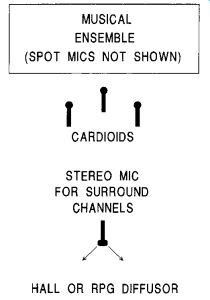
FIG. 6 A DMP surround miking method.
DMP Method
DMP engineer Tom Jung has recorded in surround using a Decca Tree stereo array for the band and a rear-aiming stereo pair for the surround ambience (FIG. 6). Spot mics in the band complete the miking. The Decca Tree uses three omni mics spaced a few feet apart, with the center mic placed slightly closer to the performers. It feeds the center channel in the 5.1 system.
The rear-aiming mics are either a coincident stereo mic, another Decca tree, or a spaced pair whose spacing matches that of the Decca tree outer pair. Jung tries to aim the rear mics at irregular surfaces to pick up diffuse sound reflections.
Woszczyk Technique
A recording instructor at McGill University, Wieslaw Woszczyk developed an effective method for recording in surround that also works well in stereo. The orchestra is picked up by a Pressure Zone Microphone (PZM) wedge made of two 18-inch +/- 29-inch hard baffle boards angled 45°. A mini omni mic is mounted on or flush with each board. At least 20 feet behind the wedge are the surround mics: two coincident cardioids angled 180° apart, aiming left and right, and in opposite polarity (FIG. 7).
According to Woszczyk, his method has several advantages:
• Imaging is very sharp and accurate, and spaciousness is excellent due to strong pickup of lateral reflections.
• The out-of-phase impression of the surround pair disappears when a center coherent signal is added.
• The system is compatible in surround, stereo, and mono. In other words, the surround signals do not phase-interfere with the front-pair signals. That is because (1) the surround signals are delayed more than 20 milliseconds, (2) the two mic pairs operate in separate sound fields, and (3) the surround mics form a bidirectional pattern in mono, with its null aiming at the sound source.
If a PZM wedge is not acceptable because of its size and weight, other arrays with wide stereo separation may be substituted.
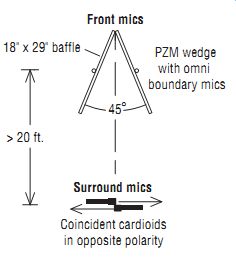
FIG. 7 The Woszczyk surround miking method.
Williams Five Cardioid Mic Array
Michael Williams, an independent audio consultant, worked out the math to determine the best cardioid microphone arrangement for realistic reproduction of surround-sound fields. His method is shown in FIG. 8.
Double MS Technique
Developed by Curt Wittig and Neil Muncy, the double MS technique uses a front-facing MS mic pair for direct sound pickup and a rear MS pair facing away from the front (FIG. 9). The rear pair is placed at or just beyond the critical distance of the room, where the reverberant-sound level equals the direct-sound level. The matrixed outputs feed front-left, front-right, rear left, and rear-right speakers. No center channel mic is specified, but you could use the front-facing cardioid mic of the front MS pair for this purpose.
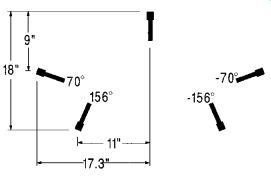
FIG. 8 The Williams five cardioid mic array (MMA or Multichannel Microphone
Array). See microphone-data.com.
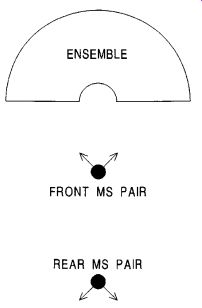
FIG. 9 The double MS technique.
Surround Ambience Microphone Array
Surround Ambience Microphone (SAM) array was developed by Gunther Theile of the Institute für Rundfunktechnik (IRT). Four cardioid mics are placed at 90° to each other and 21-25 cm apart. No center channel is described.
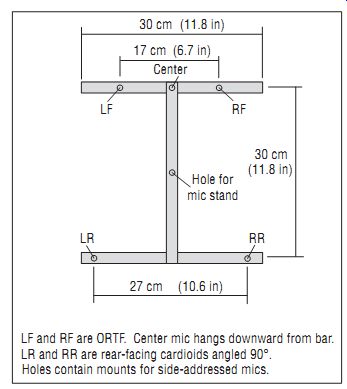
FIG. 10 Mounting bar for Burmajster surround array.
Chris Burmajster Array
Based on extensive listening tests, this array was invented by Chris Burmajster of Innocent Ear Ltd. It includes an ORTF pair for left- and right front channels, a center mic, and two rear-facing cardioids angled 90° for the left- and right-rear channels. The mics are mounted on the metal bar shown in FIG. 10 (not commercially available). According to the inventor, this arrangement provides solid central imaging. The rear ambience channels sound coherent with the front channels, rather than "disjointed" as can happen with mics far back in the hall. Details are at http://homepage.ntlworld.com/chris.burmajster.
Ideal Cardioid Arrangement

FIG. 11 ICA used in the Brauner SPL Atmos 5.1 adjustable surround micro
phone and the Microtech Gefell INA 5 surround microphone.
This system uses a special mic mount with five arms that radiate out from a center point, like a star. At the end of each arm is a condenser mic aiming outward from the center. Two examples: The Microtech Gefell INA 5 uses five M930 mics in shock mounts (microtechgefell.de). In the SPL Atmos 5.1 Surround Recording System, five Brauner condenser mics feed a five-channel mixing console, which adjusts the mic polar patterns and offers panning, bass management, and surround monitoring. SPL's Website is spl-usa.com. Both systems use the Ideal Cardioid Arrangement ( ICA 5, ITU-775 specification, FIG. 11) developed by Volker Henkels and Ulf Herrmann.
Holophone H2-PRO Surround Mic
This is a surround microphone using several omni mic capsules flush mounted in a football-shaped surface (see Figure 12-6). It captures up to eight channels of discrete surround sound and has eight XLR connectors (theholophone.com).
Sonic Studios DSM-4CS Four-Channel
Surround Dummy Head
The Sonic Studios Website (sonicstudios.com) offers a four-mic array that you can put on your head, or on a dummy head, to record surround.
Slotte Method
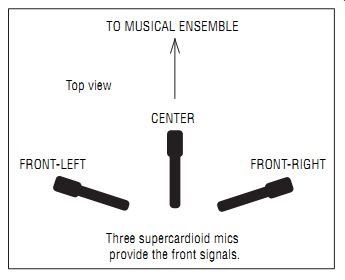
FIG. 12 The Slotte method.
Benedict Slotte developed a surround miking technique intended to produce very sharp images. The front three mics (FIG. 12) are an optimized near coincident array using three supercardioid mics. The array was designed for minimal crosstalk and time differences between mics. The level and time differences between the left-center pair are zero for a sound source at the midpoint between them. The same is true for the right-center pair. In his Audio Engineering Society (AES) paper (see Recommended Reading), Slotte lists a range of mic angling, spacing, and relative levels that work well.
Martin Method
Geoff Martin invented a surround technique using two Blumlein pairs: one for front left-right and the other for surround left-right (FIG. 13).
The goal is high interchannel coherence for direct sounds and low inter channel coherence for reverberation. Not shown is the center-channel mic, a figure-eight that is coincident with the front pair. The center mic can aim straight down to minimize image distortion, or it can aim forward but located at least 2.4 in (6 cm) below the main pair. Forward aiming is recommended if you want a lot of direct sound in the center speaker.
Mike Sokol's FLuRB Array
This array uses four coincident cardioid mics at 90° to each other aiming to the front, left, right, and back (FIG. 14). The four mic signals feed a matrix processor that delivers the correct signals for 5.1 surround, up to 8.1 surround. The array is compact, relatively low cost, and convenient to use. Plus, it will sum to stereo or mono without phase cancellations.
A matrix used with the FLuRB array is described at this Website:
manleylabs.com/containerpages/flurb.html.
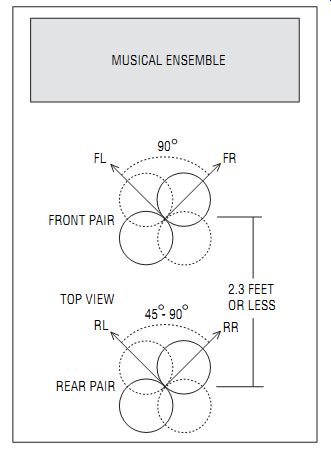
FIG. 13 The Martin method.
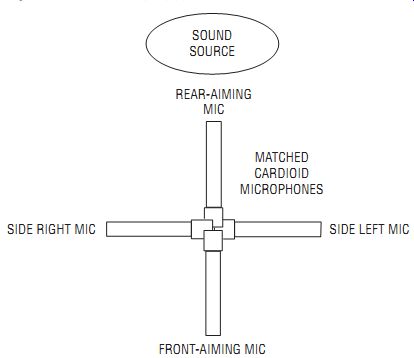
FIG. 14 Mike Sokol's FLuRB Array.
Stereo Pair plus Surround Pair
In this method, the center-channel mic is omitted. You use a standard stereo pair of your choice to pick up the musical ensemble, plus another stereo pair of your choice to pick up the hall ambience. The hall mics feed the left- and right-surround channels. For example, the system might include two stereo mics placed back-to-back, separated by several feet.
You might try a hybrid approach for a pop-music concert: feed the front speakers a mix of multiple close-up mics on stage, and feed the rear speakers the signals from a rear-aiming stereo mic.
Refs:
The Website dpamicrophones.com has a section called " Microphone University." In this section are several excellent papers on surround microphone techniques, many of which are not covered here.
Michael Williams and Guillaume Le Dû. "The Quick Reference Guide to Multi channel Microphone Arrays, Part 1: Using Cardioid Microphones." Preprint 5336 from the 110th Convention of the Audio Engineering Society, May 2001.
Paul Segar and Francis Rumsey. "Optimization and Subjective Assessment of Surround Sound Microphone Arrays." Preprint 5368 from the 110th Convention of the Audio Engineering Society, May 2001.
Benedict Slotte. "Sharpening the Image in 5.1 Surround Recording." Preprint 6509 from the 118th Convention of the Audio Engineering Society, May 2005.
Geoff Martin. "A New Microphone Technique for Five-Channel Recording." Preprint 6427 from the 118th Convention of the Audio Engineering Society, May 2005.